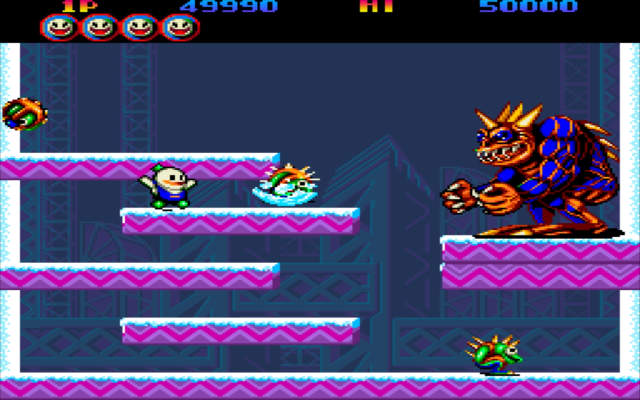

Winkler was distributing both the Felix the Cat and Out of the Inkwell cartoons at the time, but the Fleischer brothers were about to leave to set up their own distribution company, Red Seal Films, and Felix producer Pat Sullivan was constantly fighting with Winkler therefore Winkler agreed to distribute Disney's Alice Comedies as sort of an insurance policy. After failing to get a job as a director of live-action films he sent the unfinished Alice's Wonderland reel to short-subjects distributor Margaret J. Once arriving he moved in with his Uncle Robert and his brother Roy, who was recovering at a nearby government hospital from tuberculosis he had suffered during the war. Upon the closure of Laugh-O-Grams, Walt Disney worked as a freelance filmmaker before selling his camera for a one-way ticket to Los Angeles. The film was never fully complete however as the studio went bankrupt in the summer of 1923. Loosely inspired by Lewis Carroll's Alice's Adventures in Wonderland the short featured a live-action five-year-old girl named Alice ( Virginia Davis) who had adventures in a fully animated world. The last film made by the Disney company was a short called Alice's Wonderland.
Snow bros 2 part series#
Throughout 1922, the Disney company produced a series of "modernized" adaptations of fairy tales including Little Red Riding Hood, The Four Musicians of Bremen, Jack and the Beanstalk, Jack the Giant Killer, Goldielocks and the Three Bears, Puss in Boots, Cinderella and Tommy Tucker's Tooth, the latter being mostly a live-action film about dental hygiene. Walt then quit his job at the film and ad company and incorporated Laugh-O-Gram Films in May 1922, and hired former advertising colleagues as unpaid "students" of animation including Ub Iwerks and Fred Harman's brother, Hugh Harman. Newman and animated a cartoon all by himself entitled Newman Laugh-O-Grams screened in roughly February 1921. Harman soon dropped out of the venture, but Disney was able to strike a deal with local theater owner Frank L. Disney then teamed up with Fred Harman and made their first film, The Little Artist which was nothing more than an artist (Disney) taking a cigarette break at his work desk. Lutz and decided that cel animation would produce better quality and decided to open up his own animation studio. He then borrowed a camera from work and rented a book from the local library called Animated Cartoons: How They Are Made, Their Origin and Development by Edwin G. Disney became fascinated by the art and decided to become an animator. While working there he made commercials for local theaters using crude cut-out animation. to raise money for the fleeting company and Iwerks soon followed as he was unable to run the business alone. The business however got off to a rough start and Walt temporarily left for the Kansas City Film and Ad Co. Here he met fellow cartoonist Ub Iwerks, the two quickly became friends and in January 1920, when their time at the studio expired they decided to open up their own advertising agency together called Iwerks-Disney Commercial Artists.
Snow bros 2 part movie#
However, nobody would hire Disney, so his older brother Roy, who was working as a banker at the time, got him a job at the Pesmen-Rubin Art Studio where he created advertisements for newspapers, magazines, and movie theaters. Walt Disney had decided to become a newspaper cartoonist drawing political caricatures and comic strips.
.jpg)
Main article: The Walt Disney Company Beginnings Movie/animation studios The Walt Disney Company Animation also began on television during this period, with the first animated series airing on television in 1948 starting with Crusader Rabbit.

Magoo and Jay Ward Productions' Rocky and Bullwinkle.įeature-length animation began during this period, most notably with Disney's " Walt-era" films, spanning from Snow White and the Seven Dwarfs in 1937 to The Jungle Book in 1967. Many popular characters emerged from this period, including Disney's' Mickey Mouse, Minnie Mouse, Donald Duck, Daisy Duck, Goofy, and Pluto Warner Bros.' Bugs Bunny, Daffy Duck, Porky Pig, Tweety, and Sylvester MGM's Tom and Jerry and Droopy Fleischer Studios' Betty Boop Felix the Cat Walter Lantz's Woody Woodpecker Terrytoons' Mighty Mouse UPA's Mr. animation that began with the popularization of sound cartoons in 1928 and gradually ended in the late 1960s, where theatrical animated shorts began losing popularity to the newer medium of television animation, produced on cheaper budgets and in a more limited animation style by companies such as Hanna-Barbera, UPA, Jay Ward Productions, and DePatie-Freleng.

The golden age of American animation was a period in the history of U.S.


 0 kommentar(er)
0 kommentar(er)
